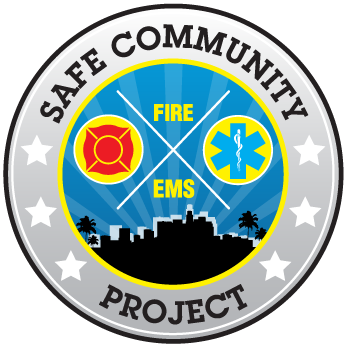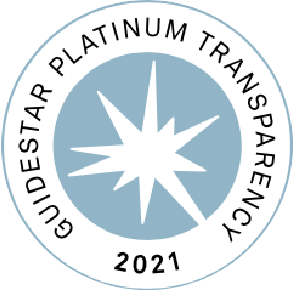The Story of MySafe:LA, as shared by Executive Officer David Barrett.
The concept for MySafe:LA originated in the 1960s. I was a student at Warner Avenue Elementary School, and our local fire company, Engine 71 came to the school to teach us about fire safety. The program was called the Jr. Fireman Program. As students, we were taught to inspect our homes for fire dangers, and based on that, plus some testing we took, our “rank” would advance. The best of the best spent a day with the LAFD. I didn’t get that far, but did become an Inspector…
Fast forward to 2003. My media company was assisting the LAFD Historical Society with a number of projects and in that regard, I along with my partner (and wife!) Cameron determined that fire safety education was missing – at least as it existed when I was a student. We spent several years doing research, traveling around the country visiting museums and other fire departments. We were already supporting the LAFD as well, with video, marketing materials, and assisting whenever asked.
In 2007, I began speaking with then LAFD Chief Engineer Doug Barry about the potential for creating a fire safety program that would include the LAFD. The relationship would be one that was unique for the time (even for today) – a public/private partnership. Our organization would manage the program, create the materials, and do the research and analysis of what we had accomplished. We would bring firefighters to the schools and they would be presented as the local heroes to the students. I also sought the advice of retired LAFD Chief Engineer William Bamattre, with whom Cameron and I had developed a good friendship, and who I respected greatly.
We agreed that a pilot program would be appropriate, and to that end, we developed a 90 day initial outreach program, aimed at several Title 1 school in the LA Unified School District. We learned a tremendous amount from those visits, including that delivering fire and life safety in the 21st century required a new kind of commitment. Arriving and talking about fire safety wouldn’t cut it. Handing out materials and saying you “had been there” wouldn’t have a lasting impact. To be successful in teaching children about fire safety, you had to engage them and make them part of the solution (a safer home). Not only did you have to engage them, but you also had to research national standards and apply them to the local market. It was an ideal fit for the team Cameron and I were building, as our shared experience in training, education, media, research, and storytelling would all play a role.
We had also learned a lot about the fire service in the many years we had assisted the LAFD Historical Society and the LAFD. The fire service has a long history of tradition. It has a unique culture most people could not easily understand. Collaborating within that culture as non-firefighters would be challenging. Because of their training and history, firefighters tend to believe they can do anything. And typically, they can achieve nearly any objective put in front of them.
The changing world of the fire service, wherein emergency medicine was trumping fire responses, combined with the ever expanding world of technology and accountability made teaching fire prevention a challenge. There wasn’t enough time to execute a proper program. And, as noted herein, the requirements for a successful program went way beyond what today’s urban fire department could muster. The solution would require properly supporting the department, sharing the best education possible, and collaborating with a culture soaked in tradition and exclusion.
The answer was to create a non-profit organization managed by a combination of active and retired firefighters, educators, and media experts. The instructors would need to have either experience in the fire service, emergency medicine, or education to be certified to teach. Everyone would need to go through extensive training, ride out with fire companies, experience the “real world” of the fire service, and receive ongoing mentoring in the LAFD’s standard operating guidelines. The answer was The Safe Community Project, with a dba for MySafe:LA. We created The Safe Community Project as our intention has always been to change the way people think about fire safety, and the City of Los Angeles (and the LAFD) would be only one of our relationships.
The first year involved applying for non-profit status, organizing a board, securing instructors, retaining expert attorneys, building a website, and creating the best possible quality materials. It also required money. The first round of financing was supplied by the Barrett family. My wife and I had come to believe in this program, and while not financially secure relative to what we did, we felt the cause merited our commitment. Former LA firefighter and real estate developer William Rolland also stepped up, supporting the early stages of the program.
Our big break came when FEMA approved a grant request, made via the LAFD Historical Society as our partner to deliver our program in 2009. The grant gave us the ability to create fire safety kits for every fire station and council district in the city. We created videos, printed materials, courseware, and developed assessment. MySafe:LA became a fully functioning and operational non-profit organization.
Today, we’re more active than ever before. We’re reaching into new markets, working with older adults, creating drills for firefighters, and growing our brand and educational suite of components. We operate with the LAFD as a separate entity, and whenever there is an appropriate purpose, we continue to collaborate on specific programs. Today, the LAFD is managed by a new Fire Chief, Millage Peaks. Chief Peaks and I meet often, and we’re working on new programs that will present the LAFD in the best possible light, while also delivering quality education to thousands of students in elementary schools.
By teaching our kids, older adults and neighbors about fire and life safety, we can help prepare our entire family to be ready for any eventuality. To learn more about MySafe:LA, visit our Mission and Management sections. MySafe:LA is a unit of The Safe Community Project, California Public Benefit Corporation 501 (c) (3).

